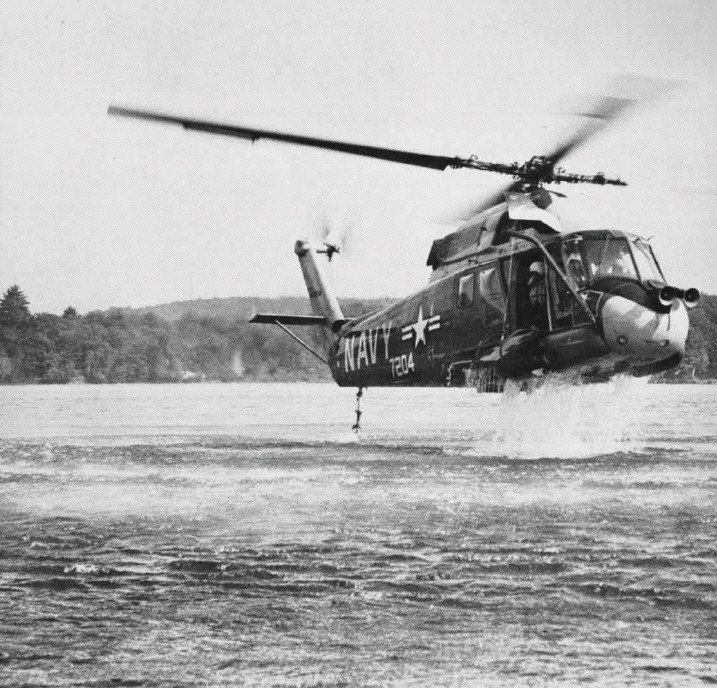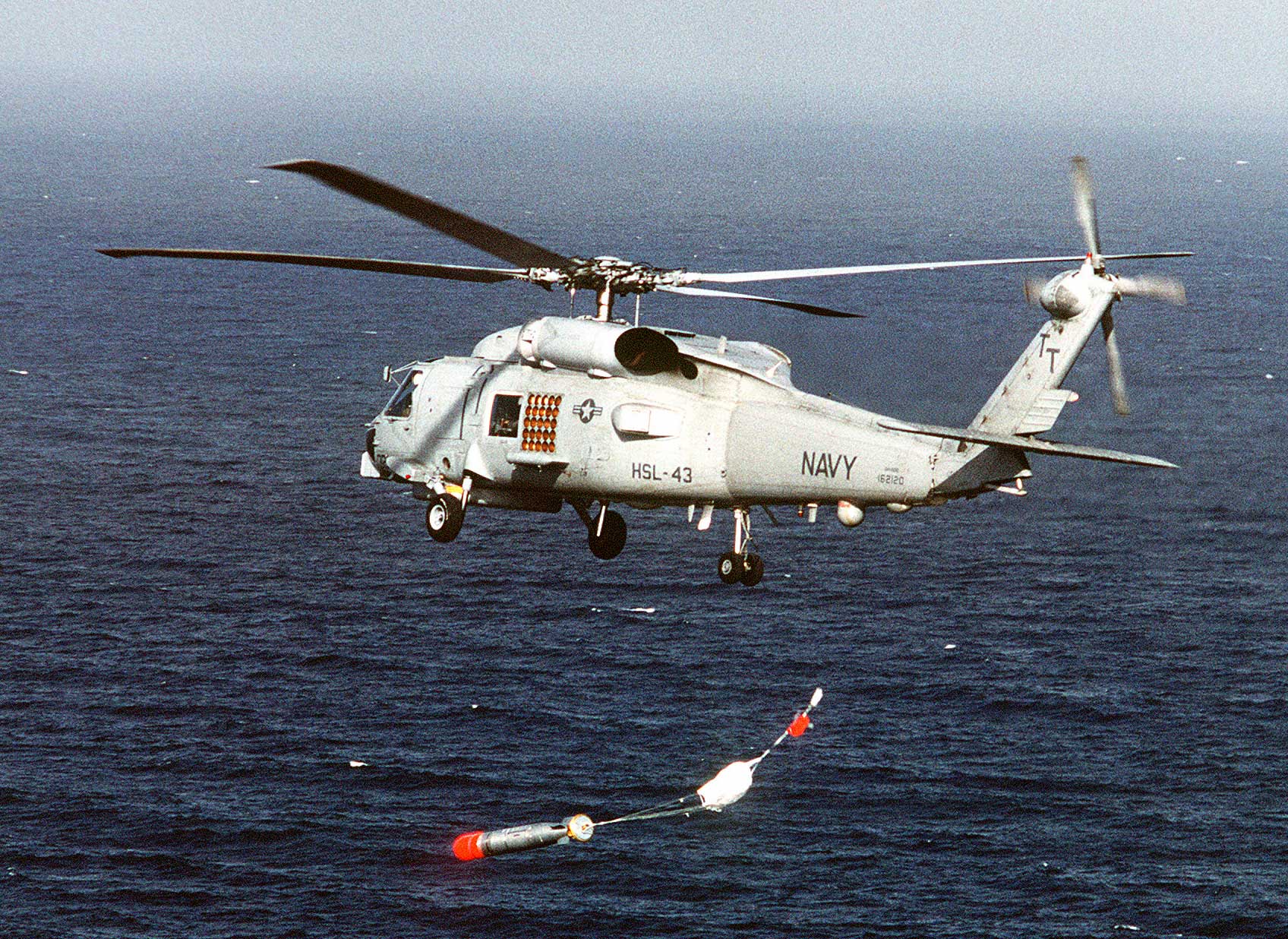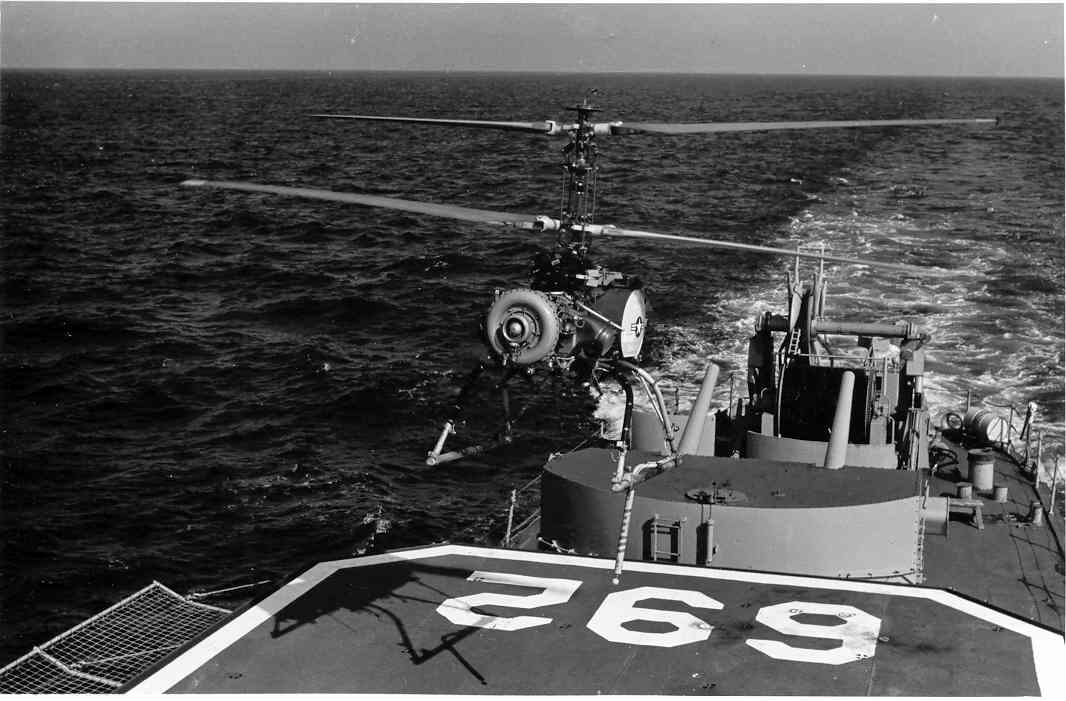|
Minegumo-class Destroyer
The ''Minegumo''-class destroyer is a destroyer class of the Japanese Maritime Self-Defense Force, the successor of the . This class derived from its predecessor to be fitted with the QH-50D DASH, the new anti-submarine drone helicopter in return for the removal of the ASROC system. And similarly, it mainly tasked with Anti-submarine warfare. In 1969, after the production of the QH-50D ceased, this class was no longer built and construction of the ''Yamagumo''-class resumed. The JMSDF considered refitting Light Airborne Multi-Purpose System Mk.1 with the Kaman SH-2 Seasprite helicopter in return for the facility of DASH, but this plan was abandoned because of the problem of cost. Finally, the facility of DASH was removed in 1979-82, and Mk.16 GMLS for the ASROC system was fitted. Murakumo was refitted in 1978 for use as a gun trials ship. Rear Mk.33 gun was removed and a new OTO Melara 76 mm The OTO Melara 76 mm gun is a naval gun built and designed by the Italian d ... [...More Info...] [...Related Items...] OR: [Wikipedia] [Google] [Baidu] |
Destroyer
In naval terminology, a destroyer is a fast, manoeuvrable, long-endurance warship intended to escort larger vessels in a fleet, convoy or battle group and defend them against powerful short range attackers. They were originally developed in 1885 by Fernando Villaamil for the Spanish NavySmith, Charles Edgar: ''A short history of naval and marine engineering.'' Babcock & Wilcox, ltd. at the University Press, 1937, page 263 as a defense against torpedo boats, and by the time of the Russo-Japanese War in 1904, these "torpedo boat destroyers" (TBDs) were "large, swift, and powerfully armed torpedo boats designed to destroy other torpedo boats". Although the term "destroyer" had been used interchangeably with "TBD" and "torpedo boat destroyer" by navies since 1892, the term "torpedo boat destroyer" had been generally shortened to simply "destroyer" by nearly all navies by the First World War. Before World War II, destroyers were light vessels with little endurance for unattended o ... [...More Info...] [...Related Items...] OR: [Wikipedia] [Google] [Baidu] |
Anti-submarine Drone
Anti-submarine drones are unmanned surface vehicles designed to stalk and hunt submarines. They are an emerging technology with a prototype ACTUV being designed by DARPA as a potentially smaller, more efficient Anti-submarine warfare capability for the United States Navy. See also Unmanned aerial vehicle An unmanned aerial vehicle (UAV), commonly known as a drone, is an aircraft without any human pilot, crew, or passengers on board. UAVs are a component of an unmanned aircraft system (UAS), which includes adding a ground-based controller ... References Anti-submarine warfare Emerging technologies {{US-mil-stub ... [...More Info...] [...Related Items...] OR: [Wikipedia] [Google] [Baidu] |
Hitachi Zosen Corporation
is a major Japanese industrial and engineering corporation. It produces waste treatment plants, industrial plants, precision machinery, industrial machinery, steel mill process equipment, steel structures, construction machinery, tunnel boring machines, and power plants. Despite its name, Hitachi Zosen, of which last word literally means shipbuilding, no longer builds ships, having spun off the business to Universal Shipbuilding Corporation in 2002, nor is it a ''keiretsu'' company of Hitachi any longer. History Hitachi Zōsen's origins go back to April 1, 1881, when British entrepreneur Edward H. Hunter established in Osaka to develop the Japanese steel-making and shipbuilding industry. Hunter had come to Japan in 1865 and had established the Onohama Shipyard in Kobe before moving to Osaka and establishing a new shipyard at the junction of the Nakatsu and Aki rivers which could construct ships of under 1000 tons displacement. His first vessel, the ''Hatsumaru'' was launched in 1 ... [...More Info...] [...Related Items...] OR: [Wikipedia] [Google] [Baidu] |
Uraga Dock Company
was a major privately owned shipyard in Uraga, Japan, which built numerous warships for the Imperial Japanese Navy. History Uraga Dock Company was founded by Enomoto Takeaki in 1869. A shipyard had already existed in Uraga from the end of the Edo period. When Commodore Perry's flagship anchored off Uraga in 1854, one of the officials of the Tokugawa shogunate who boarded the American vessel was a trained shipwright, Nakajima Saburosuke. His observation of the ship's interior enabled him to deduce the details of its design and construction, and after the departure of Perry back to the United States, the government ordered him to start construction of a three-masted barque, called the ''Hōō maru''. He subsequently participated in the repair of the Dutch-built ''Kanrin maru'', during which time he constructed the first dry dock built in Japan in 1859. However, the Tokugawa government decided to establish its own shipyards at nearby Yokosuka, and the Uraga facilities went out ... [...More Info...] [...Related Items...] OR: [Wikipedia] [Google] [Baidu] |
Mitsui Engineering & Shipbuilding
() is a Japanese company. It is listed on the Nikkei 225. Mitsui E&S is one of the companies of the Mitsui Group. Established in 1917 as the Shipbuilding Division of Mitsui & Co. with the first shipyard at Tamano. In 1937 the shipyards became a separate entity of Mitsui, Tama Shipyard. The company changed to Mitsui Shipbuilding & Engineering Co., Ltd in 1942 and finally to the current name in 1973. Facilities * Tamano Shipyard * Chiba Shipyard * Oita Factory * Yura Dockyard (MES Yura Inc) * Niigata Shipyard - acquired from Niigata Engineering Co. Ltd and renamed Niigata Shipbuilding & Repair, Inc. 2003 Ships Built by Mitsui Along with Abukuma class destroyer escort, Mitsui was contracted to build the Abukuma class destroyer escorts for the Japanese Maritime Self-Defense Force. They were built from 1988 to 1991. * 2 Ōsumi class LST - 4001 and 4002 * 1 Hiuchi class support ship - JS Hiuchi (AMS-4301) * Mitsui 56 series ships are a popular type of bulk carrier; , Mitsui had ... [...More Info...] [...Related Items...] OR: [Wikipedia] [Google] [Baidu] |
Helicopter
A helicopter is a type of rotorcraft in which lift and thrust are supplied by horizontally spinning rotors. This allows the helicopter to take off and land vertically, to hover, and to fly forward, backward and laterally. These attributes allow helicopters to be used in congested or isolated areas where fixed-wing aircraft and many forms of STOL (Short TakeOff and Landing) or STOVL (Short TakeOff and Vertical Landing) aircraft cannot perform without a runway. In 1942, the Sikorsky R-4 became the first helicopter to reach full-scale production.Munson 1968.Hirschberg, Michael J. and David K. Dailey"Sikorsky". ''US and Russian Helicopter Development in the 20th Century'', American Helicopter Society, International. 7 July 2000. Although most earlier designs used more than one main rotor, the configuration of a single main rotor accompanied by a vertical anti-torque tail rotor (i.e. unicopter, not to be confused with the single-blade monocopter) has become the most comm ... [...More Info...] [...Related Items...] OR: [Wikipedia] [Google] [Baidu] |
Kaman SH-2 Seasprite
The Kaman SH-2 Seasprite is a ship-based helicopter originally developed and produced by American manufacturer Kaman Aircraft Corporation. It has been typically used as a compact and fast-moving rotorcraft for utility and anti-submarine warfare missions. Development of the Seasprite had been initiated during the late 1950s in response to a request from the United States Navy, calling for a suitably fast and compact naval helicopter for utility missions. Kaman's submission, internally designated as the ''K-20'', was favourably evaluated, leading to the issuing of a contract for the construction of four prototypes and an initial batch of 12 production helicopters, designated as the ''HU2K-1''. Under the 1962 United States Tri-Service aircraft designation system, the HU2K was redesignated H-2, the HU2K-1 becoming the UH-2A. Beyond the U.S. Navy, the company had also made efforts to acquire other customers for export sales, in particular the Royal Canadian Navy; however, the initi ... [...More Info...] [...Related Items...] OR: [Wikipedia] [Google] [Baidu] |
Light Airborne Multi-Purpose System
The Light Airborne Multi-Purpose System (LAMPS) is the United States Navy's program that develops crewed helicopters to assist the surface fleet in anti-submarine warfare. The purpose of LAMPS is to scout outside the limits of a fleet's radar and sonar range to detect and track enemy submarines or missile-equipped escort ships and feed the real-time data back to their LAMPS mothership. They also have the capability to directly engage enemy targets with depth charges or torpedoes, or indirectly engage the enemy by coordinating fleet assets on site. A Mk II version was planned, but was canceled in favor of the more advanced Mk III. LAMPS III added the capabilities to use anti-ship missile systems (like the AGM-119 Penguin anti-ship missile) and night vision capability. History In October 1970, the UH-2 was selected to be the platform to function as the interim Light Airborne Multi-Purpose System (LAMPS) helicopter.Frawley 2002, p. 100. During the course of the 1960s, LAMP ... [...More Info...] [...Related Items...] OR: [Wikipedia] [Google] [Baidu] |
Japanese Maritime Self-Defense Force
, abbreviated , also simply known as the Japanese Navy, is the maritime warfare branch of the Japan Self-Defense Forces, tasked with the naval defense of Japan. The JMSDF was formed following the dissolution of the Imperial Japanese Navy (IJN) after World War II. The JMSDF has a fleet of 154 ships, 346 aircraft and 50,800 personnel. History Origin Following Japan's defeat in World War II, the Imperial Japanese Navy was dissolved by the Potsdam Declaration acceptance. Ships were disarmed, and some of them, such as the battleship , were taken by the Allied Powers as reparation. The remaining ships were used for repatriation of the Japanese soldiers from abroad and also for minesweeping in the area around Japan, initially under the control of the ''Second Bureau of the Demobilization Ministry''. The minesweeping fleet was eventually transferred to the newly formed Maritime Safety Agency, which helped maintain the resources and expertise of the navy. Japan's 1947 Constitution w ... [...More Info...] [...Related Items...] OR: [Wikipedia] [Google] [Baidu] |
Destroyer
In naval terminology, a destroyer is a fast, manoeuvrable, long-endurance warship intended to escort larger vessels in a fleet, convoy or battle group and defend them against powerful short range attackers. They were originally developed in 1885 by Fernando Villaamil for the Spanish NavySmith, Charles Edgar: ''A short history of naval and marine engineering.'' Babcock & Wilcox, ltd. at the University Press, 1937, page 263 as a defense against torpedo boats, and by the time of the Russo-Japanese War in 1904, these "torpedo boat destroyers" (TBDs) were "large, swift, and powerfully armed torpedo boats designed to destroy other torpedo boats". Although the term "destroyer" had been used interchangeably with "TBD" and "torpedo boat destroyer" by navies since 1892, the term "torpedo boat destroyer" had been generally shortened to simply "destroyer" by nearly all navies by the First World War. Before World War II, destroyers were light vessels with little endurance for unattended o ... [...More Info...] [...Related Items...] OR: [Wikipedia] [Google] [Baidu] |
ASROC
The RUR-5 ASROC (for "Anti-Submarine Rocket") is an all-weather, all sea-conditions anti-submarine missile system. Developed by the United States Navy in the 1950s, it was deployed in the 1960s, updated in the 1990s, and eventually installed on over 200 USN surface ships, specifically cruisers, destroyers, and frigates. The ASROC has been deployed on scores of warships of many other navies, including Canada, Germany, Italy, Japan, the Republic of China, Greece, Pakistan and others. History ASROC started development as the Rocket Assisted Torpedo (RAT) program by the Naval Ordnance Test Station at China Lake in the early 1950s to develop a surface warship ASW weapon to counter the new post-World War II submarines which ran quieter, at much higher speed and could attack from much longer range with high speed homing torpedoes. In addition, the goal was to take advantage of modern sonars with a much larger detection range. An extended range torpedo delivered by parachute from th ... [...More Info...] [...Related Items...] OR: [Wikipedia] [Google] [Baidu] |
QH-50 DASH
The Gyrodyne QH-50 DASH (''Drone Anti-Submarine Helicopter'') is a small drone helicopter built by Gyrodyne Company of America for use as a long-range anti-submarine weapon on ships that would otherwise be too small to operate a full-sized helicopter. It remained in production until 1969. Several are still used today for various land-based roles. Design and development DASH was a major part of the United States Navy's Fleet Rehabilitation and Modernization (FRAM) program of the late 1950s. FRAM was started because the Soviet Union was building submarines faster than the US could build anti-submarine frigates. Instead of building frigates, the FRAM upgrade series allowed the US to rapidly update by converting older ships that were less useful in modern naval combat. The navy could upgrade the sonar on World War II-era destroyers but needed a stand-off weapon to attack at the perimeter of the sonar's range. The old destroyers had little room for add-ons such as a full flight ... [...More Info...] [...Related Items...] OR: [Wikipedia] [Google] [Baidu] |




.jpg)

